AirPods 3 review: the missing link in the evolution of Apple headphones

The author of these lines has been waiting for something like this for a long time - headphones at an affordable price with the usual functionality of "simple" AirPods and "bonuses" in the form of the capabilities of the more expensive Pro and Max models. Apparently, the company quite succeeded in its plans, although it is impossible to call AirPods 3 direct heirs of AirPods 2: despite the origin and similarity of the design, there are unusual details that affect the everyday experience.
3 reasons to buy AirPods 3:
- increased battery life compared to even AirPods Pro;
- improved water repellency - AirPods 3 are not afraid of even profuse sweating or rain;
- support for spatial audio.
3 reasons not to buy AirPods 3:
- lack of active noise cancellation (ANC);
- you only have in-ear headphones in your ears;
- you have hearing problems and need Conversation Boost.
More recently Apple presented the next generation of its most popular headphones - AirPods. Among the announced updates, the company pointed to a new speaker, up to 30 hours of battery life, and support for MagSafe chargers. From their elder brothers, AirPods Max, the new earbuds have an adaptive equalizer that optimizes sound output, and the larger speaker and shape updates can, according to the manufacturer, "send sound directly to the ear canal."
What's in the coveted box?
Everything is standard for the Apple company, although it does not fully comply with Jobs's precepts: the first thing that a customer will see when opening the lid is not the headphones themselves, but a square envelope with documentation, under which you can already find the case with the headphones itself. In the past, Apple adhered to the principle that the first thing a customer sees when they open a box is a newly purchased item of desire.
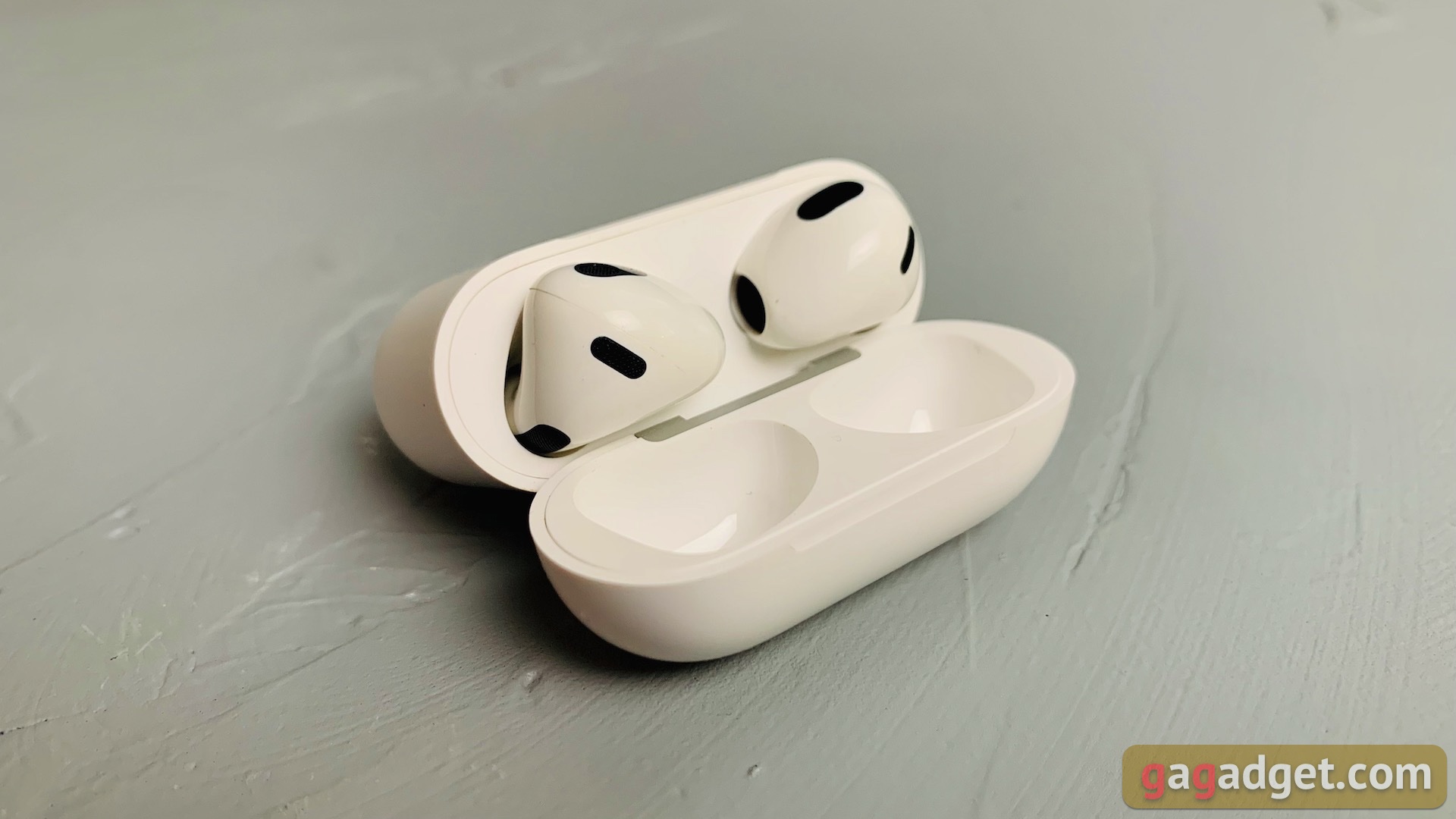
The case with headphones is the same size as that of AirPods 2, only it opens, from the point of view of their owner, "from the side". This placement of the headphones inside the case is facilitated by the shortened "legs" of the headphones. While the case supports wireless charging by default, there is also a Lightning to USB-C cable included. To find it, just pull on the paper "tongue" with a painted green arrow, which is hidden under the case with headphones.

Fun fact: if you look closely, you will notice that the box contains a photo of the two right earbuds. It is difficult to explain such a whim of designers, because it is absolutely unrealistic to find a person with two right ears on the planet.
What will surprise the case?
In general, continuing the comparison with the previous generation of AirPods, nothing new, except for the conditional rotation of the case from the "portrait" to "landscape" position. the shape of the earphone and the jack was almost perfect, the new generation of headphones looks strangely alien in the case.
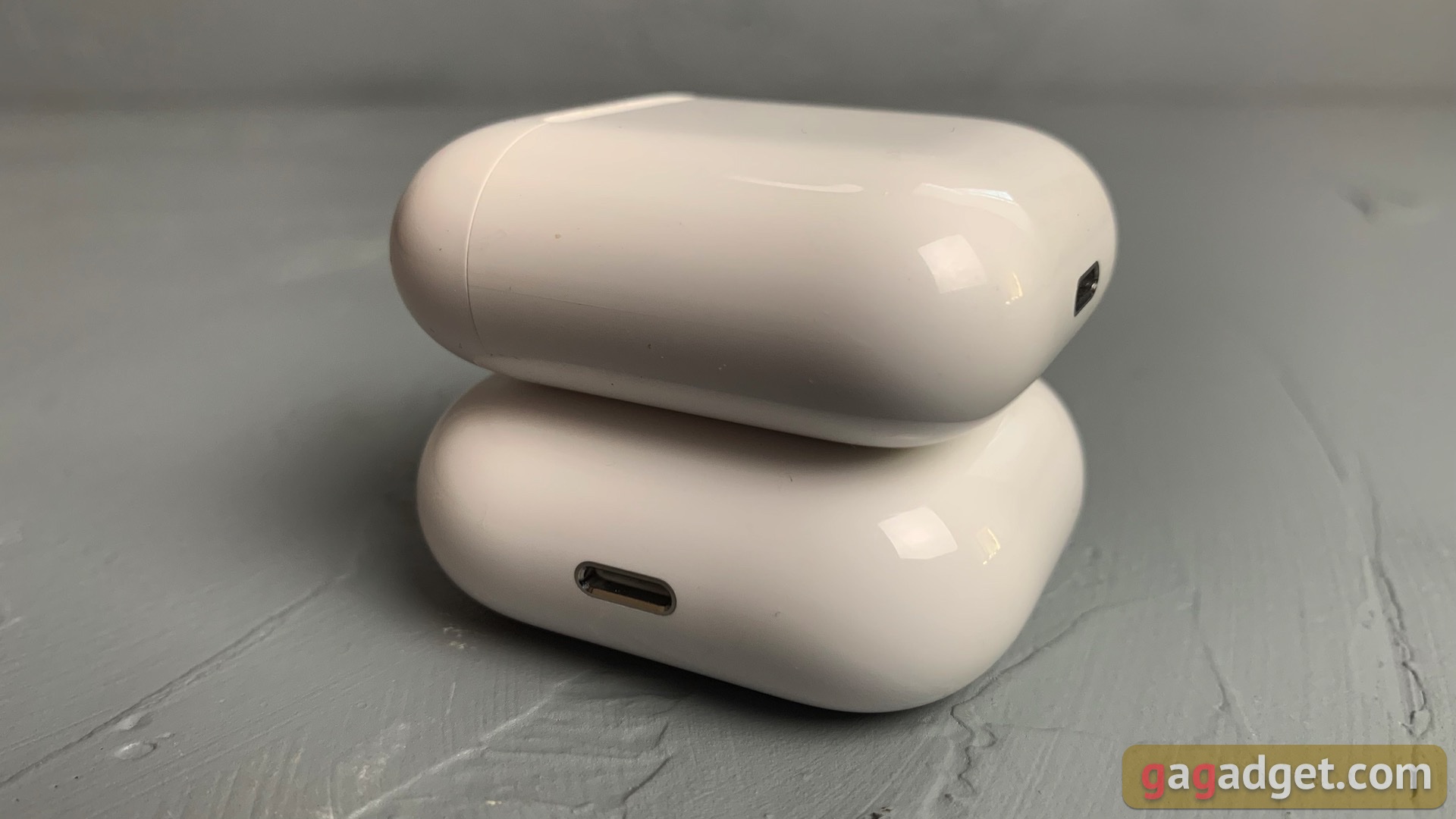
Everything else is in place. An LED on the front panel, a pairing button on the back, the familiar sound of a lid clicking a la "Zippo lighter" is also present. As usual, if you open the case in front of you, the jack for the right earphone will be on the right, and for the left - on the left. A nice little thing that, oddly enough, not all manufacturers adhere to.

But the headphones themselves in the case now “look” not to the sides, but at each other. And if you've owned two previous generations of AirPods, as you tuck the earbuds into the jacks, the fine motor skills of your fingers will kick your brain that something is wrong. A funny feeling.
Habitual unaccustomed AirPods
The shape of the headphones has hardly changed, although the earbuds themselves have become a little larger, and the leg is noticeably shorter. Nevertheless, AirPods 3 do not cause any discomfort when wearing, even for a long time - as in the case of AirPods 2, sometimes you can simply forget about the fact that the headphones are inserted into your ears.
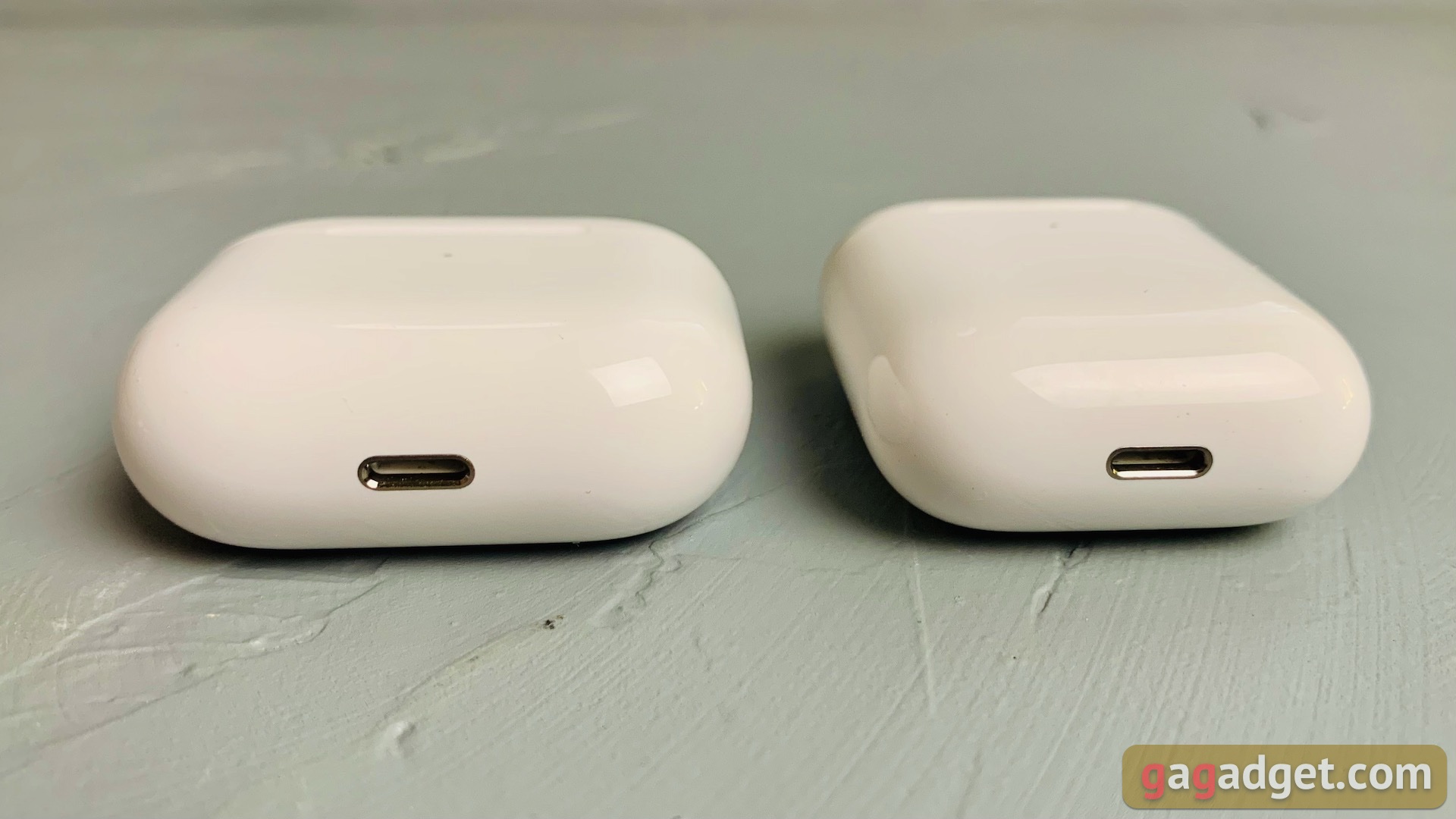
At the same time, it is almost impossible to make the headphones fall out of the average ears. Walking, running, jumping (including tilting the head to the side) did not in any way affect the "perseverance" of AirPods 3 in several people of different ages. Of course, there can always be an exception in the form of very small or, conversely, huge ears. But for most of those users who organically do not accept screwing in the AirPods Pro silicone ear cushions, while dreaming of joining the new possibilities of "Apple sound", the new generation of AirPods should do one hundred percent.
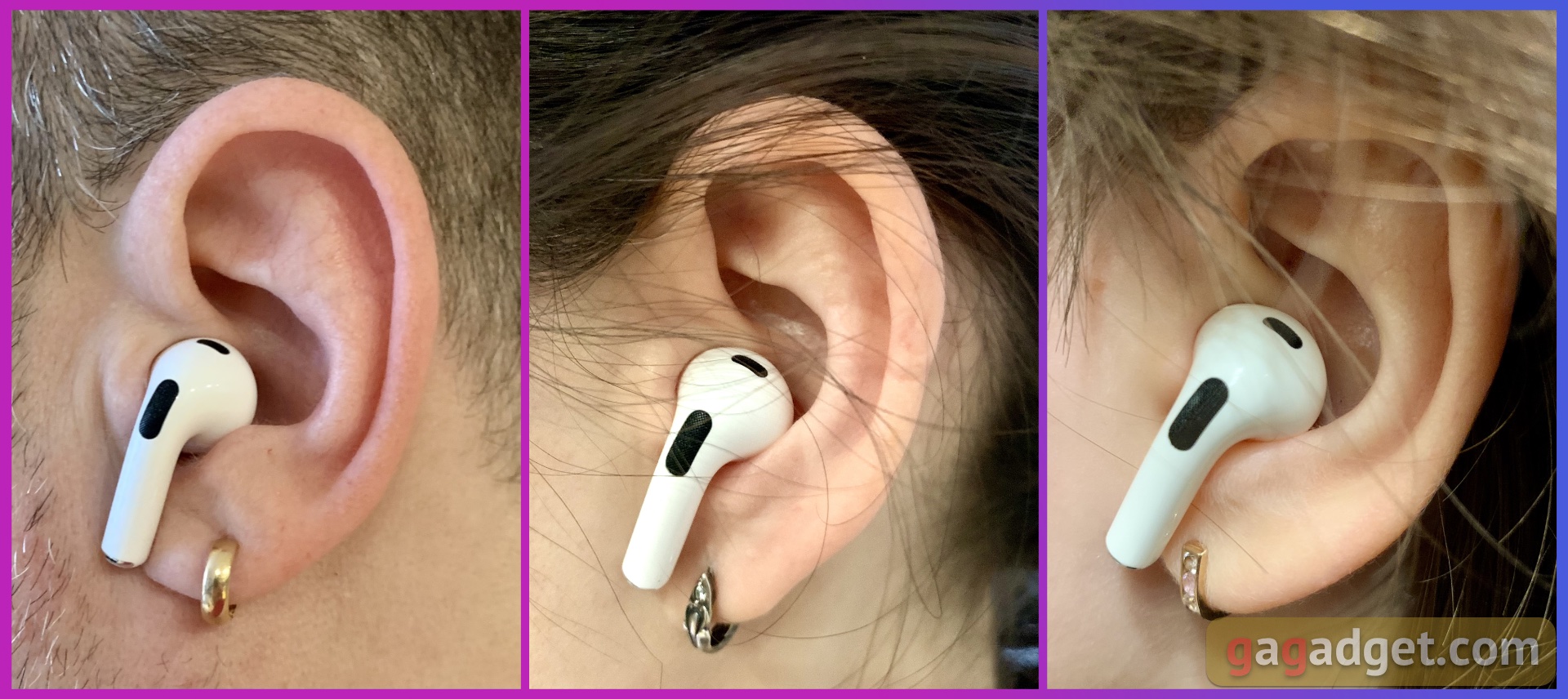
A noticeable difference for those accustomed to the customizable system of "tapping" on the right or left earphone of previous generations of "simple" AirPods will be the new control system for pressing buttons hidden in the legs of the headphones.
The first and notable difference is that now you cannot assign different actions to different headphones. If, in the case of AirPods 2, it was possible to assign, for example, a pause to tapping on the left earphone, and switching to the next track to tapping on the right, now the actions with the legs of the right and left headphones are completely identical.
The buttons are completely invisible, but the "click" under the fingers is felt quite clearly. As usual, a single press will answer a call or pause playback, a double press will switch to the next track, a triple press will return to the previous one, etc. know exactly how the button located on the wire together with the microphone unit works. Here is the same thing, and it makes no difference whether you press this button on the right or left earphone.
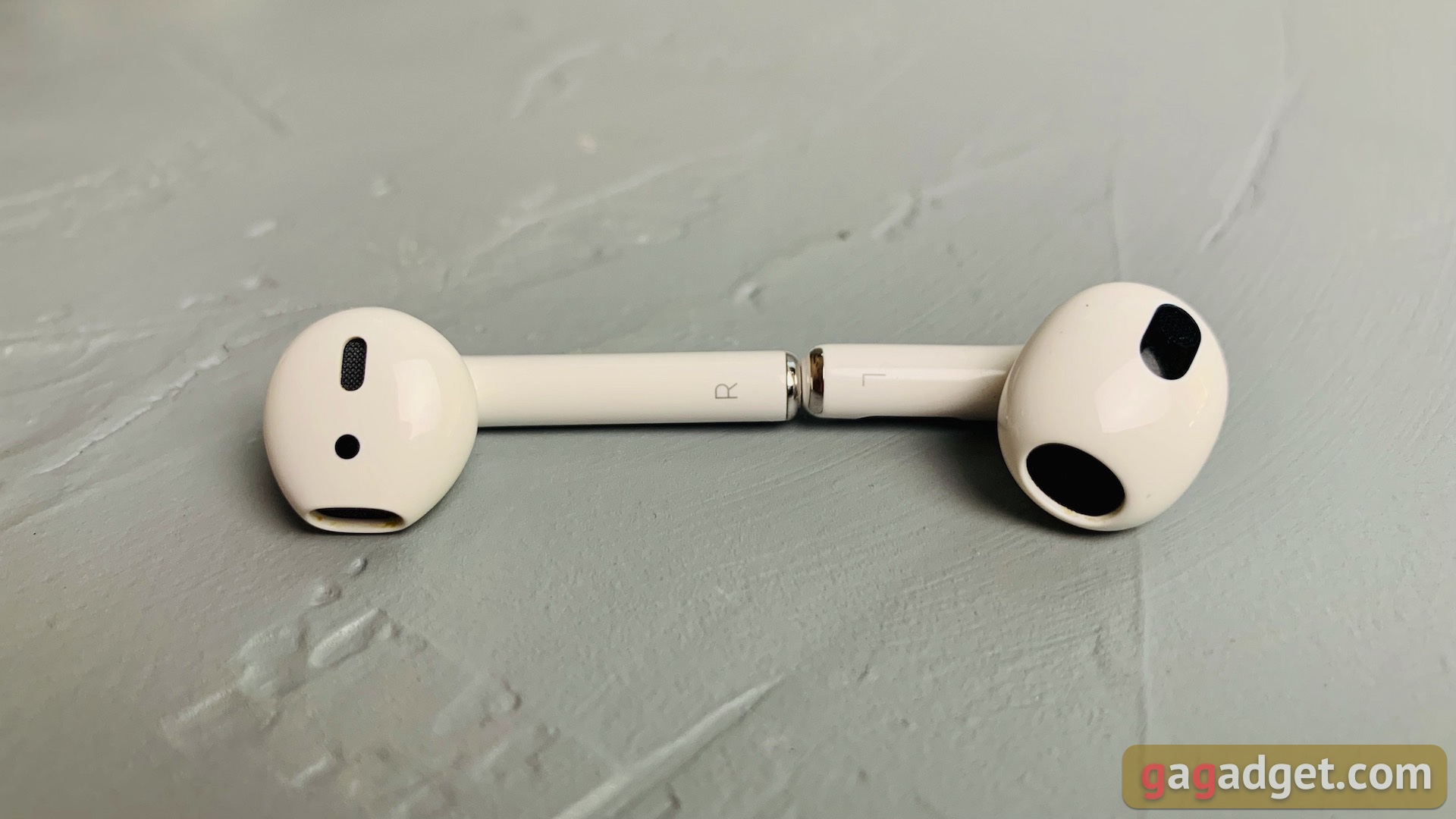
The headphones also got rid of the optical sensor, which was replaced with a skin touch sensor. According to Apple, this reduced the chance of accidentally turning on the headphones to zero.
How the new Airpods sound
An old joke is loved in Odessa:
- Oh, this Caruso! So much noise - “a good singer, a good singer” ... And he lisps, and lisps, and does not hit the notes!
- What are you listening to Caruso?
- No, Izya sang to me!
The author of these lines feels himself mentioned Izya: it is a thankless task to describe the sound in letters for those who have not heard it. But we'll try, okay?
If you've been waiting for AirPods 3 to conquer new heights of sound quality - in vain. This is still the same "strong middling" as in the previous versions of this line. Regular stereo sounds the same as stereo in AirPods 2. If Apple meant any noticeable difference in stereo sound, then the average person with a non-musical ear would perceive it as a statistical error.
But! Do not forget that Apple engineers have added support for spatial audio to this model, or, in marketing language, Spatial Audio. At the same time, there is no need to put an equal sign between Dolby Atmos and Spatial Audio, since a standard stereo signal can also spread the Apple technology in space. True, not from all sources, but more on that later.

What does it look like in practice? Imagine that you turn on the TV, stand in front of it and listen to the sound that is reproduced from the speakers of this TV itself. If you close your eyes and slowly make a full revolution around your axis, you will know exactly which side of you the TV is, that is, the source of the sound, every second. Of course, if you, in principle, have no hearing impairment.
Exactly the same thing happens when you feed sound, for example, from the Apple TV set-top box to AirPods 3. Headphones on your head at the very first moment of a movie or TV show playback determine the virtual center channel somewhere in front of you and hold it in this point in space, no matter how you twist your head.
Moreover, you can repeat the same number as with a real TV, turning 360 degrees, but the virtual "TV" will remain in place, as if the sound source is not headphones on your head, but somewhere at a distance in the room. Believe me, when headphones (which are directly on your head) draw a sound source in your brain "a few meters behind your back", it's really impressive.

This works not only with movies, but also with music. But if in films such behavior of virtual sound sources is justified, then with music the sensations are ambiguous. It seems like it's interesting to turn your head and listen to how the musicians "stay in their places" in the room, but in fact this self-indulgence quickly gets boring. Especially when moving along the street, where you have to turn your head almost all the time. Fortunately, head tracking can be turned off via the iOS Control Center. There you can also turn off music in Dolby Atmos altogether if you want to enjoy the usual stereo sound.
At the same time, what is interesting, if the musical material is initially available exclusively in stereo, then you can still activate tracking of head turns for it and turn to face either the right or the left channel. It's funny in its own way, but the concept of "balance" is going to hell, so this trick does not add to the joy of listening.
To make it clear what AirPods 3 can do in the end, and what they can't, here's a small sign:
| IOS Music | MacOS Music | TvOS Music | IOS video | MacOS video | TvOS video | |
| Stereo | ✓ | ✓ | ✓ | ✓ | ✓ | ✓ |
| Stereo Spatial Audio | ✓ | ✗ | ✗ | ✓ | ✗ | ✓ |
| Dolby Atmos | ✓ | ✓ | ✓ | ✓ | ✓ | ✓ |
| Dolby Atmos Spatial Audio | ✓ | ✗ | ✗ | ✓ | ✗ | ✓ |
It should be noted that on Apple TV this Spatial Audio does not work everywhere, but at the same time in a much larger number of applications than you might imagine. It is clear that Apple TV + or Netflix have long acquired support for newfangled features, but tracking the position in space in third-party media applications like Plex turned out to be a pleasant surprise.
But YouTube, The Verge, Reuters, Euronews and other news applications cannot boast of Spatial Audio support. To achieve the same tracking in space for the audio signal from Apple TV, in principle, it is impossible, even manually - the system simply displays a message that this "feature" is only for video formats.
macOS Monterey turned out to be the "poorest" system in terms of sound indulgence. If a Dolby Atmos track is available, you'll hear it, but that's about it. The most "omnivorous" was iOS, where any sound settings work for both video and audio applications. Whether it's YouTube or the Noizio sound effects app, spatial positioning works everywhere.
What else can AirPods 3 do?
It has already become a standard that the voice assistant Siri listens to its owner all the time, including through Apple headphones. AirPods 3 are no exception, so no taps, taps or other actions are needed to activate Siri, just say a familiar phrase.

Announcement of calls, reading of incoming messages aloud and so on - available and "fully loaded". But noise reduction and "transparency mode" are not available for this model. But nThe Find My application can now search for AirPods 3 by default, and not just in the case, but also for each headphone separately. This is a nice bonus for those who are used to leaving their headphones anywhere.
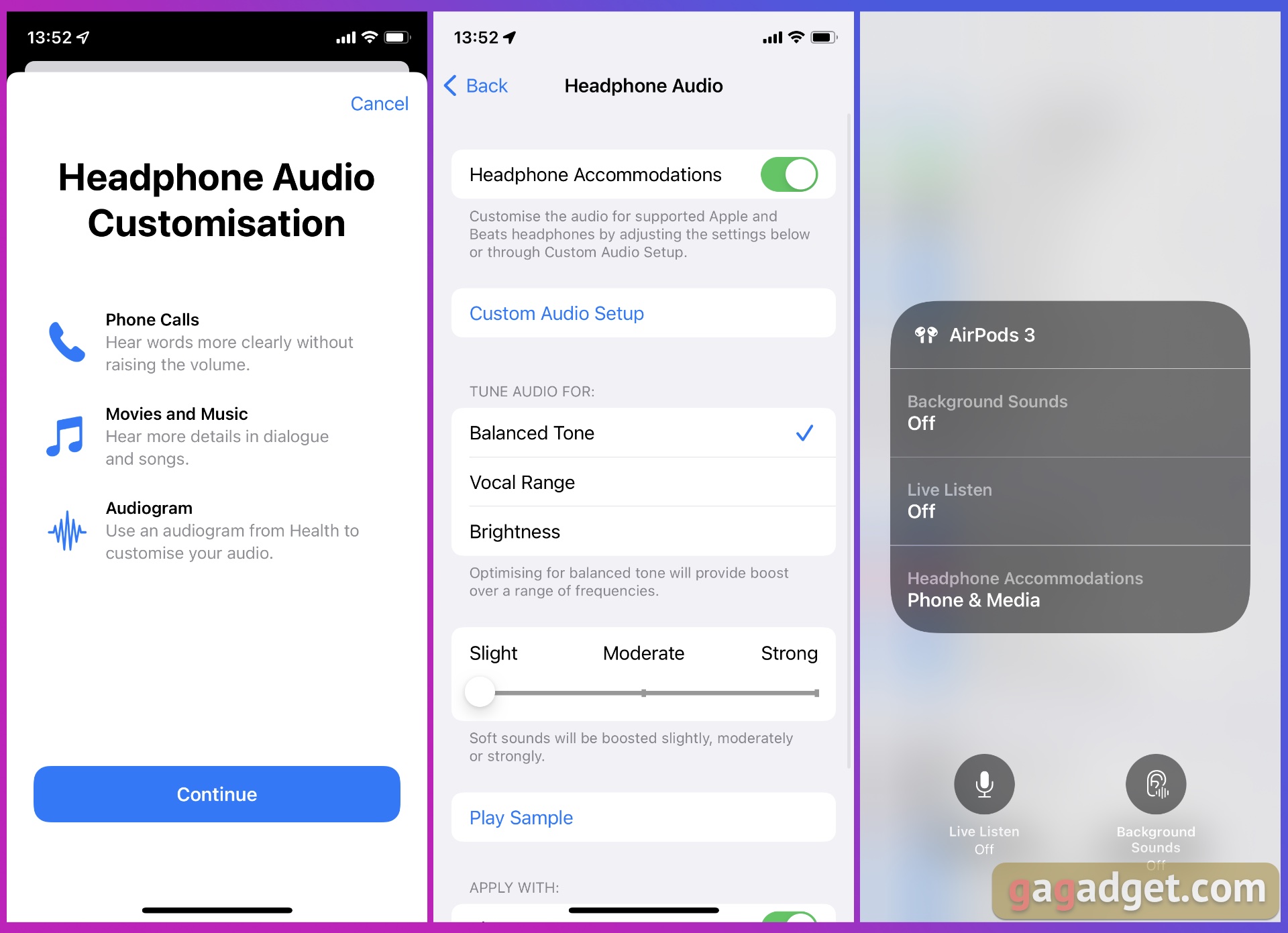
For people with hearing impairments, AirPods 3 offers all the same features as in the previous generation of this series: sound adaptation for specific disorders and the Live Listen function. The latter allows you to use your iPhone as a directional microphone, amplifying the interlocutor's voice during face-to-face dialogue.
But the new Conversation Boost function (analogous to Live Listen, only without using the iPhone as an expansion microphone) is not available for AirPods 3. If the presence of Conversation Boost is a key point in choosing headphones for you, then you will have to look towards AirPods Pro.
Who is AirPods 3 for?
First of all, of course, for the owners of the iPhone or other Apple technology. For everyone else, i.e. Windows or Android lovers, AirPods 3 won't be particularly different from any other manufacturer's Bluetooth earbuds.
However, it should be borne in mind that Apple Music subscribers with Android phones can still hear the very spatial audio that Apple is now focusing on. The only question is how many owners of Android smartphones on board are Apple Music subscribers.
Among Apple users, the new AirPods 3 will suit those who, for various reasons, do not want to buy the Pro version. Perhaps, like the author of these lines, you do not like the feel of the silicone ear cushions in your ears. Perhaps we are talking about banal savings. But one way or another, if your old AirPods 2 no longer hold a charge or are simply worn out by time, or you just want something new, the new AirPods 3 are your choice, no doubt.
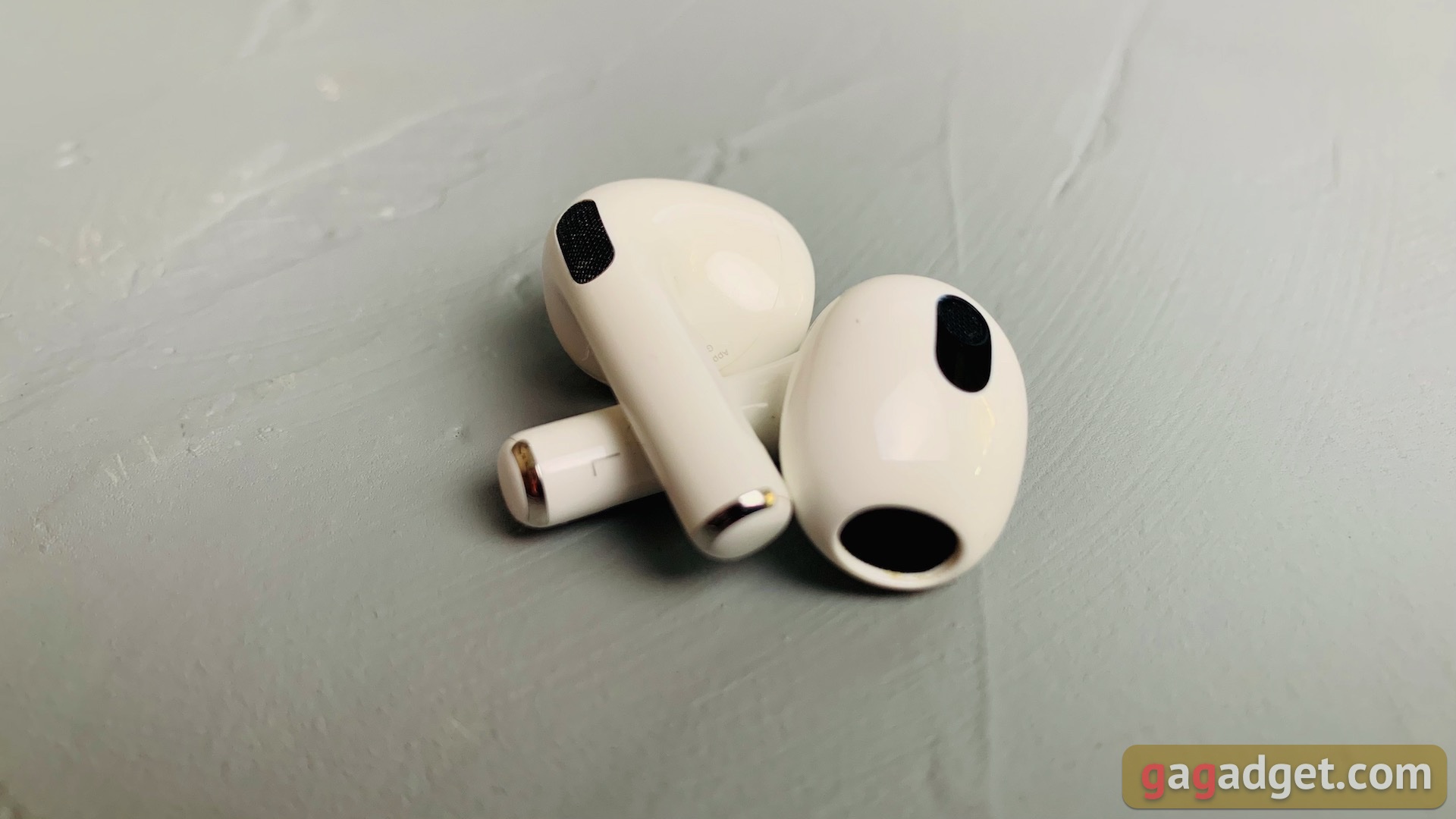
5 things to know about AirPods 3
- Despite the number 3 in the name, this is the fourth generation of Apple's “small” headphones, and the third actually were AirPods Pro;
- However, in terms of Apple's headphone evolution (and company's pricing), AirPods 3 sit between AirPods 2 and AirPods Pro;
- Headphone design - regular earbuds, like AirPods 2, without silicone ear pads for screwing into the ear canals;
- From AirPods Pro, the new AirPods 3 receive support for surround sound and head tracking;
- At the same time, the capabilities of AirPods Pro for the hearing impaired (Conversation Boost) in the new AirPods 3 are not available, as well as active noise cancellation with the "transparency" mode.
| Specifications Apple AirPods 3 | |
|---|---|
| Audio technology | Custom designed Apple driver with high excursion |
| Dedicated high dynamic range amplifier | |
| Spatial audio with dynamic head tracking | |
| Adaptive equalizer | |
| Sensors | Dual Beam Forming Microphones |
| Inward pointing microphone | |
| Skin detection sensor | |
| Motion detection accelerometer | |
| Speech-detecting accelerometer | |
| Force sensor | |
| Chip | H1 headphone chip |
| Sweat and water resistance | IPX4 |
| Charging case | Works with MagSafe charger, Qi certified chargers, or Lightning connector |
| AirPods running time | Up to 6 hours of listening time on a single charge (up to 5 hours with spatial audio on) |
| Up to 4 hours talk time on a single charge | |
| AirPods Runtime with MagSafe Charging Case | Up to 30 hours of listening time |
| Up to 20 hours talk time | |
| 5 minutes in a case provides about 1 hour of listening time or about 1 hour of talk time | |
| Connection | Bluetooth 5.0 |
For those who want to know more
- AirPods Pro review: white silence
- Apple AirPods Review
- Apple AirTag review: fetishist's white label
- Best TWS earbuds
- Samsung Galaxy Buds Pro vs Huawei FeeBuds Pro. Comparison of the best TWS earbuds of the year